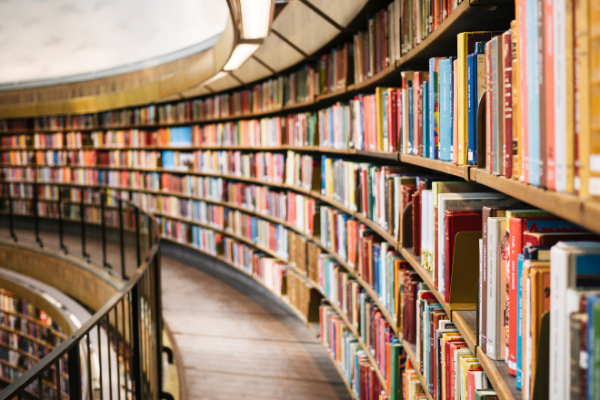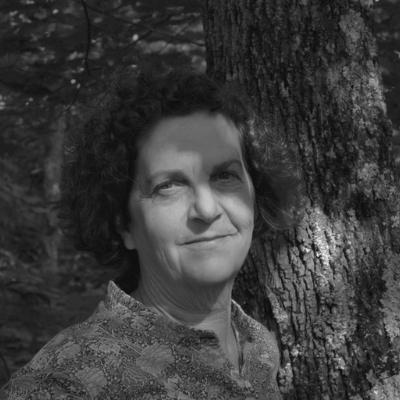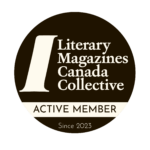What is Anne Marie Todkill Reading?
By Anne Marie Todkill
My husband asks whether the fluctuating contents of a stack of books in the living room could be dispersed to their rightful positions, organized by genre, subject, author, and editor, in our various bookcases. Nope, I reply. Hands off. I’ll lose track of them. My anxiety is that my intention to read, or finish reading, these particular books will be waylaid by any number of distractions, and my reading plan will fall apart. The pile in question contains (1) necessary reads or re-reads for research, or to revisit ideas; (2) books bestowed by others; (3) books I think will be good for me; (4) books ordered in the flush of an enthusiasm; (5) books by friends and friends of friends. To each category a certain deference is attached. The living-room book pile is a place of honour.

For my husband, whose career was spent in libraries, the anxiety is not so much that he will lose track of certain books as that he’ll never be aware of their existence in the first place. For him, locating something to read should be achievable by means of either searching or browsing. The success of either method relies on keeping a collection in order. He seems to think I’m hiding the books in my ever-growing stash of “must read next.”
There might be something to that.
Applying my categories to the living-room stack yields: (1) a book about the ecology of forests, another about the early history of forestry in North America, and a report on a forest survey conducted in Ontario in 1911; Anna Reid’s Leningrad (2011), a history of the siege; (2) The Best American Food Writing 2019, guest edited by Samin Nosrat (a gift from my nephew; a terrific collection of sociocultural reflections in which cuisine is secondary); Index Cards (Moyra Davey, 2020); (3) These Truths: A History of the United States (Jill Lepore, 2018); (4) Rosemary Ashton’s life of George Eliot (1996; the only joint purchase in the bunch, and so I really shouldn’t be hoarding it); (5) Annie Ernaux’s electrifying memoir The Years (2020), translated from the French by the Canadian writer, Alison L. Strayer, an old friend of mine who lives in Paris; and two wonderful poetry chapbooks, New Year Letter (A. H. Jernigan) and The Great Fire of Main-à-Dieu: Poems from Clarence the Welder (Anita Lahey, illustrations by Pauline Conley), both exquisitely produced in 2020 by Baseline Press (London, Ont). The Years and Index Cards are in the austere bindings of Fitzcarraldo Editions, an independent publisher of contemporary fiction and long-form essays founded in London (UK) six years ago.
“My anxiety is that my intention to read, or finish reading, these particular books will be waylaid by any number of distractions, and my reading plan will fall apart.”
The book I’m sunk into most deeply right now is Moyra Davey’s Index Cards, a collection of essays of which the most pertinent here is “The Problem of Reading.” Davey is the Canadian-born, New York–based photographer, filmmaker, and writer whose solo exhibition The Faithful is at the National Gallery of Canada until January 3, 2021. Index Cards arrived in the mail through the kindness of Alison Strayer, who is also an old friend of Davey’s – with whom I’m acquainted only at this remove. (Books, friendships, Venn diagrams.) Davey describes the “recurring dilemma” of deciding what to read next, the idea that if one “can simply plug into the right book then all will be calm, still, and right with the world.” She cites an email from Strayer, who articulates a similar feeling: “It seems that when one has answered the question ‘what to read?’ one has solved all the problems of restlessness, unfocus, and hunger of a certain sort,” since any reading “always contains the seeds of future readings.” I, too, am soothed by this settled-in state, the permission one grants oneself to pour time into a book that, in one way or another, is likely to further a project or a line of thought. Davey reflects on the satisfactions of a “productive” or “generative” kind of reading, reading done “as Virginia Woolf put it, ‘with pen & notebook,’ the [kind] that implies a relation to writing, to work.” But she also defends (and who doesn’t?) reading without design, as in the unprogrammed reading of youth, chance finds, tangents, escapes, and “rubbish reading.”
Index Cards is to a large extent the product of reading undertaken “with pen & notebook.” Davey blends memoir, autofiction, diary entries, critical analysis, and commonplace book in ways that are raw, neurotic, earthy, cryptic, circular, exhausting, and brilliant. “Notes on Photography and Accident” fills me with the same exhilaration as did my first readings of Sontag and Barthes on photography and makes me aware of theorists and practitioners I didn’t know. Other pieces draw on an eclectic mix of authors and associated preoccupations. To take a small sample: James Baldwin, Italo Calvino, Walter Benjamin, Jorge Luis Borges, Jane Bowles, Jean Genet, Natalia Ginzburg, Janet Malcolm, Susan Sontag, Mary Wollstonecraft. Davey refers to “a flânerie of reading that can be linked to the flânerie of a certain kind of photographing. Both involve drift, but also purpose.” But her analytical, cross-referenced catalogue of reading and concepts is neither aimless nor idle. For one thing, reading and writing provide a route out of an impasse with her first métier, photography.
Davey ends “The Problem of Reading” with a resolution to tidy up her bookshelves, not-so-secretly hoping that “something forgotten, something irresistible” will come into view and deflect her from the task. As for me, anything might happen between the time I find a permanent place for Index Cards on a bookcase and return to my stack of readerly intentions.

Anne Marie Todkill’s poetry, short fiction, and essays have appeared in various Canadian literary magazines. Her first collection of poetry will be published by Brick Books in 2022.
Photos courtesy of Maksym Kaharlytskyi and Susan Yin.

